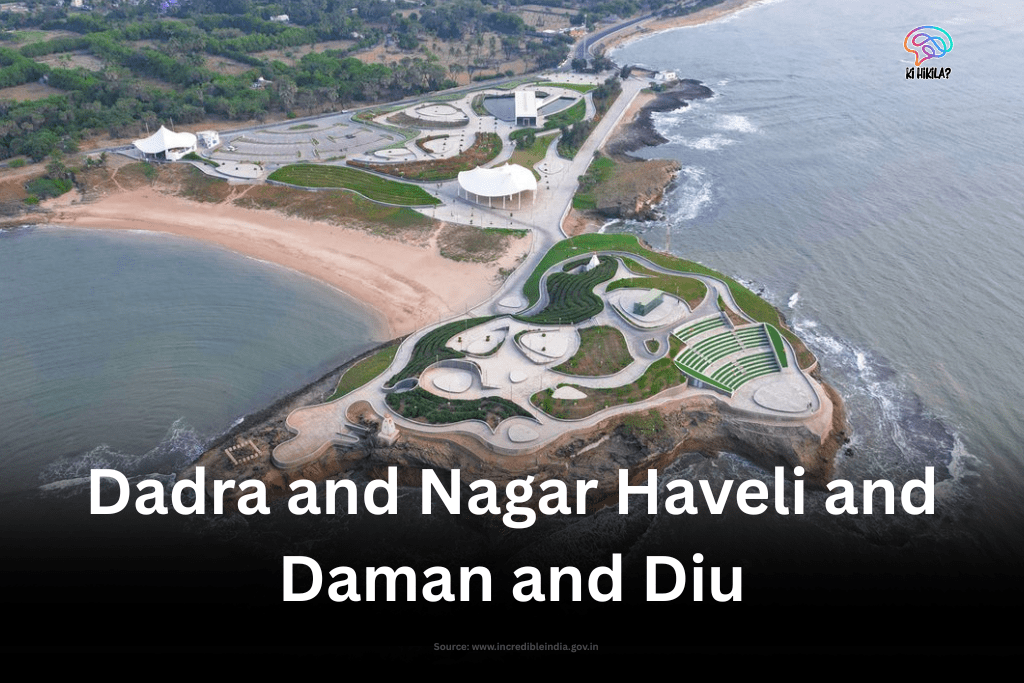Introduction
Did you know? Daman once served as a Portuguese colony for over 400 years, and its cobbled streets and sea-facing churches still echo that colonial charm. Nestled quietly along India’s western coastline, the Union Territory of Dadra and Nagar Haveli and Daman and Diu may not dominate travel guides—but it’s a treasure trove of cultural diversity, scenic beauty, and historical intersections that few explore deeply.
This newly unified territory—formed by merging two separate Union Territories in 2020—is a fascinating blend of coastal serenity and inland tribal richness. With its palm-fringed beaches, quiet fishing villages, Indo-Portuguese heritage, and lush forests, the region offers a compelling glimpse into India’s lesser-known but equally vibrant regions.
Whether you’re a student tracing colonial legacies, a curious traveler seeking offbeat destinations, or a researcher diving into post-merger administrative developments, this blog covers everything you need to know—comprehensively and clearly. Let’s begin exploring one of India’s most culturally layered and geographically unique Union Territories.
Location and Geography
Situated on the western coast of India, Dadra and Nagar Haveli and Daman and Diu is a Union Territory that brings together two geographically distinct regions. Despite their separation by about 650 kilometers, they are administratively unified, forming a unique blend of inland forested terrain and coastal beauty.
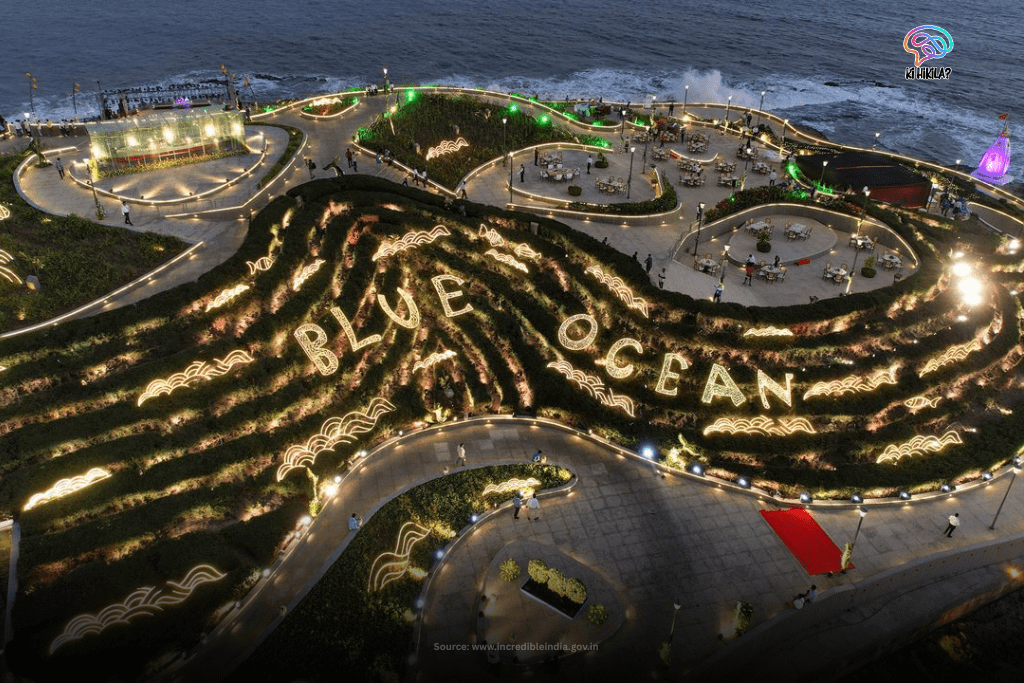
Geographical Segments:
- Dadra and Nagar Haveli
- Located between Maharashtra and Gujarat, this landlocked region is nestled in the foothills of the Western Ghats.
- Characterized by undulating terrain, lush greenery, and dense forests, the area lies along the Daman Ganga River, which plays a crucial role in its irrigation and ecosystem.
- Daman and Diu
Neighboring States:
- Gujarat: Surrounds both Daman and Diu, as well as Nagar Haveli.
- Maharashtra: Borders Dadra and Nagar Haveli to the south and east.
Terrain Highlights:
- Dadra and Nagar Haveli: Known for hilly regions, forest reserves, and tribal settlements.
- Daman and Diu: Characterized by sandy beaches, coastal plains, and flat terrain with a maritime influence.
This unusual geographical composition makes the territory distinct—not just in administrative makeup, but also in ecological and cultural diversity.
Historical Importance
The history of Dadra and Nagar Haveli and Daman and Diu is a complex tapestry woven with tribal heritage, maritime trade, European colonization, and the eventual struggle for integration into the Indian Union. Though geographically separated, the regions share a common colonial legacy—primarily Portuguese—which profoundly shaped their cultural and administrative landscape.
Ancient and Pre-Colonial Era
- Dadra and Nagar Haveli was historically inhabited by indigenous tribal communities, especially the Warli, Dhodia, and Kokna tribes.
- The region came under the influence of various local rulers including Rajput clans and Maratha confederacies over time.
- Daman and Diu, being coastal, were exposed to maritime trade routes. Diu, in particular, was a significant port on the Kathiawar coast, attracting Arab, Persian, and Gujarati traders from early medieval times.
Portuguese Colonial Rule
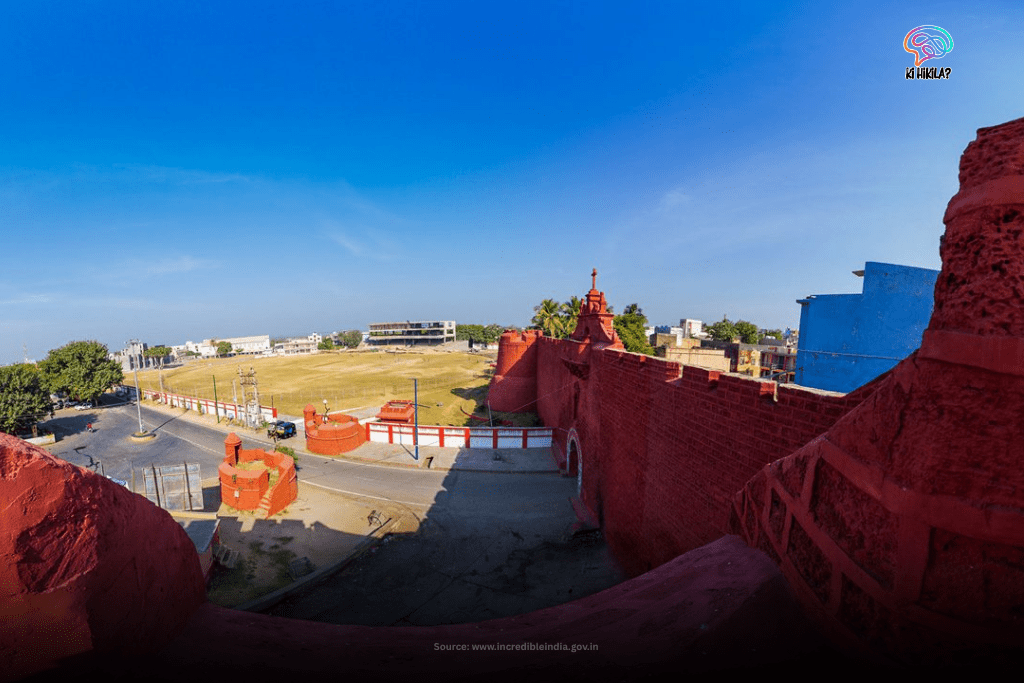
- Portuguese Arrival: In the early 16th century, the Portuguese established control over parts of India’s western coast.
- Diu was captured in 1535, becoming an important naval base.
- Daman was annexed in 1559, serving as a strategic outpost.
- Dadra and Nagar Haveli came under indirect Portuguese control in 1779, granted as compensation by the Marathas for Portuguese help in a conflict.
- For over 400 years, these regions were part of the Estado da Índia, the Portuguese colonial state. This period saw the construction of churches, forts, and colonial administrative systems, many of which still stand today as heritage landmarks.
Struggle for Liberation
- Unlike British India, these territories remained under Portuguese control even after India’s independence in 1947.
- In 1954, local freedom fighters, with support from Indian nationalists, liberated Dadra and Nagar Haveli.
- Daman and Diu, however, remained under Portuguese rule until 1961, when the Indian Armed Forces launched Operation Vijay, reclaiming them along with Goa.
Post-Independence Integration
- Dadra and Nagar Haveli became a separate Union Territory in 1961.
- Daman and Diu were also governed as a separate Union Territory from 1961 onward.
- In January 2020, the two were merged into a single Union Territory, officially named Dadra and Nagar Haveli and Daman and Diu, to streamline administration and governance.
This history—marked by colonization, tribal heritage, and a delayed but determined integration into India—gives the Union Territory a distinct identity within the Indian Union.
Climate and Topography of Dadra and Nagar Haveli and Daman and Diu
Understanding the climate and geographical landscape of Dadra and Nagar Haveli and Daman and Diu reveals much about the Union Territory’s ecological richness and regional uniqueness. This coastal–inland combination offers both tropical greenery and breezy shorelines—making it an interesting subject for students, researchers, and travel planners alike.
Seasonal Climate Overview
The Dadra and Nagar Haveli and Daman and Diu experiences a tropical monsoon climate, marked by distinct summer, monsoon, and winter seasons:
- Summer (March to June):
- Temperatures range between 30°C to 40°C, with high humidity, especially in the coastal belts of Daman and Diu.
- Best time to explore inland tribal regions like Silvassa for those seeking cultural immersion without heavy rains.
- Monsoon (June to September):
- Heavy rainfall occurs due to the southwest monsoon winds.
- The Western Ghats near Dadra and Nagar Haveli receive substantial rain, enriching its dense forests and wildlife.
- The lush green landscapes during monsoon make this period ideal for eco-tourism enthusiasts.
- Winter (October to February):
- A pleasant season with temperatures averaging 15°C to 28°C, attracting tourists to popular tourist spots in Daman and Diu.
- Ideal time for coastal walks, heritage site visits, and water-based recreational activities.
Topographical Features of the Region
Dadra and Nagar Haveli and Daman and Diu is geographically diverse, offering varying terrain across its three major segments:
- Dadra and Nagar Haveli topography is characterized by:
- Undulating hills and forested plateaus
- Rich biodiversity within protected wildlife zones
- Fertile plains irrigated by the Daman Ganga River, vital for both agriculture and rural livelihoods
- Daman and Diu coastal landscape features:
- Flatlands and sandy beaches with prominent sea cliffs in parts of Diu
- Coral reefs and tidal inlets that support unique marine ecosystems
- Proximity to the Arabian Sea that defines its maritime culture and tourism economy
Key Natural Highlights
- Daman Ganga River: A lifeline for agriculture and ecology in the region.
- The Western Ghats (periphery): They influence rainfall and act as biodiversity hotspots in the hinterlands.
- Shoreline Biodiversity: The coastal regions are home to mangroves, estuarine flora, and migratory bird populations.
This diverse climatic and topographic blend in Dadra and Nagar Haveli and Daman and Diu supports not just scenic beauty but also sustainable livelihoods, tribal heritage, and unique ecological systems that are increasingly important for climate research and educational tourism.
Demographics
The demographic profile of Dadra and Nagar Haveli and Daman and Diu offers a fascinating snapshot of tribal diversity, linguistic variation, and a rich mix of cultures shaped by both indigenous communities and colonial legacies. Spread across three regions, the population reflects a blend of inland tribal traditions and coastal influences.
Population Overview
According to the 2021 government estimate, the combined population of Dadra and Nagar Haveli and Daman and Diu stands at approximately 5.85 lakh people.
- Dadra and Nagar Haveli houses a majority of the population, particularly in and around Silvassa, the administrative hub.
- Daman and Diu, being smaller in land area but more urbanized, have relatively denser population clusters.
Ethnic and Tribal Composition
One of the most distinct features of Dadra and Nagar Haveli and Daman and Diu is its high tribal population, especially in Dadra and Nagar Haveli, where over 50% of residents belong to Scheduled Tribes.
- Prominent tribal groups include the:
- Warlis – known for their traditional paintings and agricultural lifestyle
- Dhodia and Kokna – practicing mixed farming and forest-based occupations
These communities have preserved their unique customs, dialects, and belief systems, contributing to the region’s living heritage.
Languages Spoken
- Gujarati is widely spoken, particularly in Daman and Diu due to cultural proximity with Gujarat.
- Hindi serves as the administrative and educational language across the territory.
- Marathi is spoken in some pockets, especially in tribal and border regions.
- Tribal dialects are still in use in many rural and forested areas, though their presence is gradually decreasing in urban spaces.
Religion
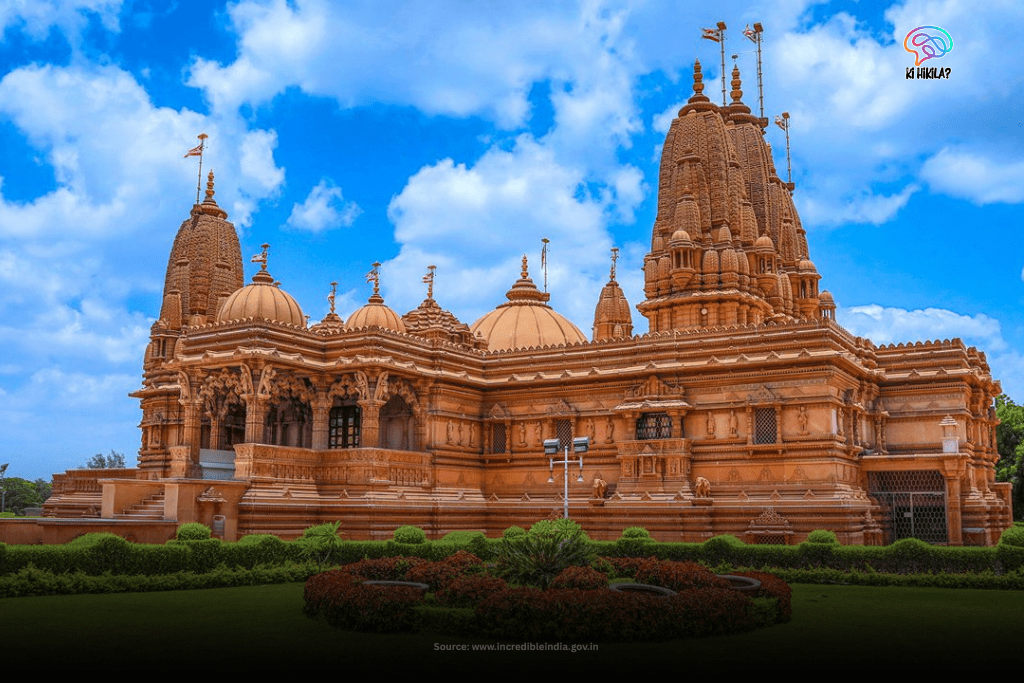
- Hinduism is the predominant religion, followed by over 90% of the population.
- There are Christian minorities, especially in Daman and Diu, a legacy of the Portuguese era.
- Small numbers of Muslims and other communities also reside across urban zones.
Urban vs. Rural Composition
- Daman and Diu are largely urbanized, with better access to healthcare, education, and transport.
- Dadra and Nagar Haveli still retains a significant rural and forest-based population, reliant on agriculture and traditional livelihoods.
This unique demographic structure — where urban-industrial growth coexists with tribal rural traditions — makes the region a sociological and developmental study model in balancing modernity and tradition.
Administrative Setup
Unlike typical Indian states, Dadra and Nagar Haveli and Daman and Diu operate under a Union Territory governance model, directly overseen by the Central Government of India. This administrative structure is lean, centrally coordinated, and designed to ensure effective governance over three distinct regions, despite their geographical separation.
Capital and Key Administrative Cities
- Daman serves as the capital of the Union Territory and houses the secretariat and key administrative offices.
- Silvassa, although not the official capital, functions as a strategic economic and administrative center, especially for Dadra and Nagar Haveli.
- Diu plays a vital administrative role at the regional level, especially in managing coastal governance and tourism.
Formation and Governance Model of Dadra and Nagar Haveli and Daman and Diu
- The merger of Dadra and Nagar Haveli with Daman and Diu took effect on January 26, 2020, creating a single Union Territory to streamline administration and cut redundant costs.
- The Union Territory is headed by a Lieutenant Governor (LG) appointed by the President of India.
- The LG acts as the executive head, representing the President and coordinating between the central ministries and local administration.
No Legislative Assembly
Unlike Delhi or Puducherry, Dadra and Nagar Haveli and Daman and Diu does not have its own legislative assembly. Laws and regulations are framed and enforced directly under central authority, with the LG consulting Union Ministries and the Ministry of Home Affairs for key decisions.
Representation in Indian Parliament
- Lok Sabha (Lower House):
The Union Territory elects one Member of Parliament (MP) to the Lok Sabha. As of the latest elections, the Dadra and Nagar Haveli and Daman and Diu constituency covers the entire territory. - Rajya Sabha (Upper House):
Being a Union Territory without a legislature, it does not send any representatives to the Rajya Sabha.
District Structure and Local Bodies of Dadra and Nagar Haveli and Daman and Diu
The UT (Dadra and Nagar Haveli and Daman and Diu) is administratively divided into three districts, each aligned with the three main regions:
- Dadra and Nagar Haveli District
- Daman District
- Diu District
Each district is headed by a District Collector (DC) and supported by local panchayats, municipal councils, and urban local bodies:
- Silvassa Municipal Council for Dadra and Nagar Haveli
- Daman Municipal Council for the capital region
- Diu Municipal Council overseeing the island’s civic functions
These local bodies manage services like sanitation, public works, water supply, local taxation, and tourism infrastructure.
Central Schemes and Governance Initiatives for Dadra and Nagar Haveli and Daman and Diu
Due to its Union Territory status, the region benefits from direct funding and implementation of Central Government schemes such as:
- PM Awas Yojana (Urban & Rural)
- Smart Cities Mission (especially in Silvassa)
- National Rural Health Mission (NRHM)
- Skill India and Digital India initiatives tailored to tribal and coastal populations
This centralized yet localized governance model enables the Union Territory to balance regional development, fiscal efficiency, and policy alignment with the national agenda. It’s a fascinating model for administrative students, urban planners, and governance researchers alike.
Culture and Traditions of Dadra and Nagar Haveli and Daman and Diu
Despite being one of India’s smallest Union Territories, Dadra and Nagar Haveli and Daman and Diu are culturally vibrant. The region is a meeting ground of tribal heritage, Gujarati coastal traditions, and Portuguese colonial influence — each leaving a distinct mark on local customs, arts, language, and lifestyle.
Tribal and Coastal Harmony
Inland areas like Dadra and Nagar Haveli are predominantly tribal, while Daman and Diu are more urban and coastal. This blend creates a dual-layered cultural identity:
- Tribal communities — such as the Warlis, Dhodias, and Kuknas — retain unique customs, rituals, and art styles.
- Coastal societies in Daman and Diu reflect a fusion of Gujarati Hindu practices and Portuguese Catholic traditions.
Both worlds coexist — one preserving nature-linked folkways, the other celebrating seafaring and spiritual heritage.
Traditional Attire
- Men in tribal areas wear dhotis or lungis with head turbans; women wear colorful saris and blouses with silver jewelry, especially during festivals.
- In Daman and Diu, you’ll often see Christian-influenced clothing: men in shirts and trousers, women in modest skirts and blouses, especially among older generations.
The diversity of clothing mirrors the territory’s multicultural roots.
Celebrated Festivals in Dadra and Nagar Haveli and Daman and Diu
Religious and community festivals offer a glimpse into the spiritual rhythm of the region:
- Navratri – Celebrated with folk dances like Garba and Dandiya, especially in urban Daman.
- Diwali and Holi – Widely celebrated by the Hindu majority across all districts.
- Tribal festivals – Like Kali Puja and Bhagoria, where rituals are tied to harvests, forest worship, and seasonal change.
- Christmas and Easter – Especially prominent in Diu, with Portuguese-era churches lit up for midnight mass and community feasts.
These celebrations often feature music, folk drama, and local delicacies, uniting different communities.
Music, Dance, and Art Forms
- Warli art – A symbolic tribal art form from the Warlis, drawn in white on mud walls using geometric shapes. It tells stories of farming, worship, and daily life.
- Folk dances like Tippani, Tarma, and Dhol dance are performed during festivals and community events.
- Portuguese-influenced music — especially church choirs and sea shanties — still echo through Daman and Diu’s churches and community halls.
These expressive forms are not just entertainment — they are repositories of oral history and cultural memory.
Folk Beliefs and Legends of Dadra and Nagar Haveli and Daman and Diu
Oral tradition thrives among the tribal groups. Stories of forest spirits, ancestral blessings, and seasonal myths form a critical part of their social fabric.
- In Diu, local folklore still references St. Thomas, Portuguese sailors, and miraculous sea rescues, blending faith with maritime legend.
Cuisine: A Cultural Marker
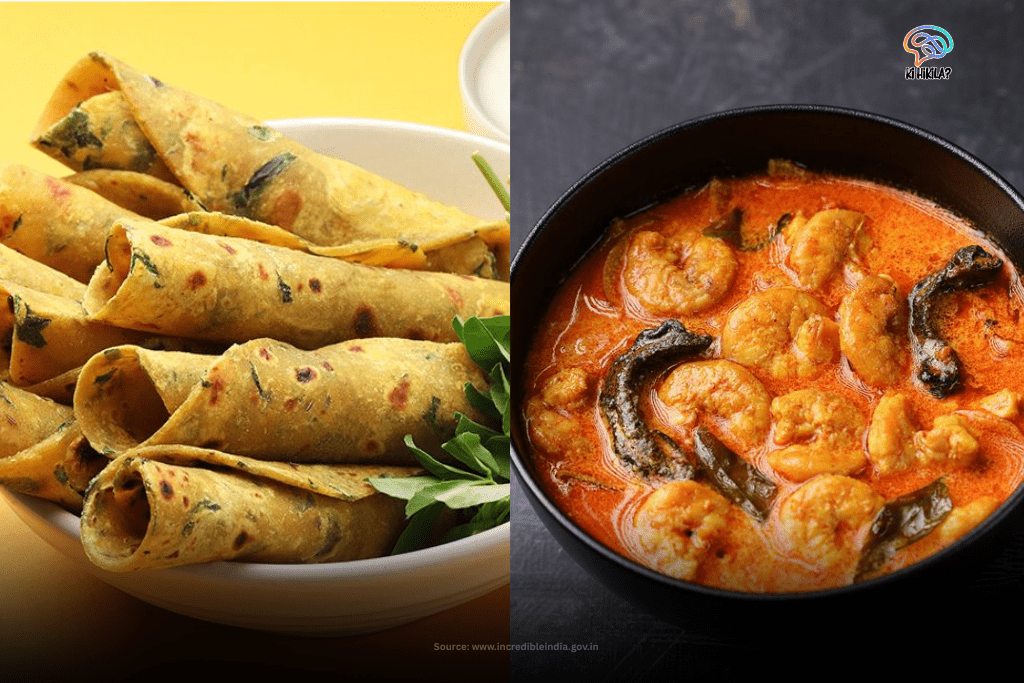
Food also reflects cultural fusion:
- Tribal cuisine: Primarily millet, rice, local vegetables, forest fruits, and smoked meats.
- Daman & Diu specialties: Fish curry, coconut-based gravies, vindaloo, and bebinca (a Goan-Portuguese dessert).
Vegetarianism is common among inland tribal groups, while coastal regions enjoy a rich variety of seafood.
Dadra and Nagar Haveli and Daman and Diu region’s cultural depth lies in its ability to hold space for contrast — from the hills of tribal Warlis to the sea-soaked traditions of Diu. It is a place where ritual meets rhythm, and history meets the everyday, forming a tapestry unlike any other in India.
Flora and Fauna of Dadra and Nagar Haveli and Daman and Diu
Despite its modest land area, Dadra and Nagar Haveli and Daman and Diu is home to diverse ecosystems — from forested hills and lush river valleys to coastal wetlands and sandy beaches. These varying habitats support a wide spectrum of plant and animal species, many of which are unique to this part of western India.
Green Zones and Native Plant Life
- Dadra and Nagar Haveli is especially rich in vegetation, with over 40% of its land area covered in dense to medium forest cover, according to the Forest Survey of India.
- Dominant tree species include:
- Teak
- Sandalwood
- Khair (Acacia catechu)
- Mahua
- The forests are home to a variety of medicinal plants and wild fruit-bearing trees — which are vital to the tribal communities’ traditional healthcare and diet.
Along the coastal regions of Daman and Diu, coconut palms, casuarina groves, and salt-tolerant shrubs thrive. The climate also supports plantation crops like cashew, banana, and mango, especially in the southern parts of the territory.
Wildlife Species of Dadra and Nagar Haveli and Daman and Diu
While not known for large predator species, the Union Territory hosts an impressive mix of terrestrial and aquatic fauna, especially in forested interiors and marine zones.
- Mammals commonly spotted include:
- Indian civet
- Jungle cat
- Mongoose
- Four-horned antelope
- Reptiles like monitor lizards, Indian pythons, and various species of snakes inhabit the rocky and forested zones.
The coastal waters near Daman and Diu are part of India’s marine biodiversity hotspots, hosting:
- Dolphins
- Flying fish
- Crabs, mollusks, and corals
These species are essential to the region’s ecology as well as the livelihoods of coastal fishing communities.
Avian Diversity
The area is also rich in birdlife:
- Peafowl, parakeets, drongos, and hornbills are seen in forest zones.
- Wetlands near rivers and estuaries attract egrets, herons, and kingfishers.
- Migratory birds such as flamingos and bar-headed geese occasionally stop over in the Daman estuary region.
Wildlife Sanctuaries and Protected Areas of Dadra and Nagar Haveli and Daman and Diu
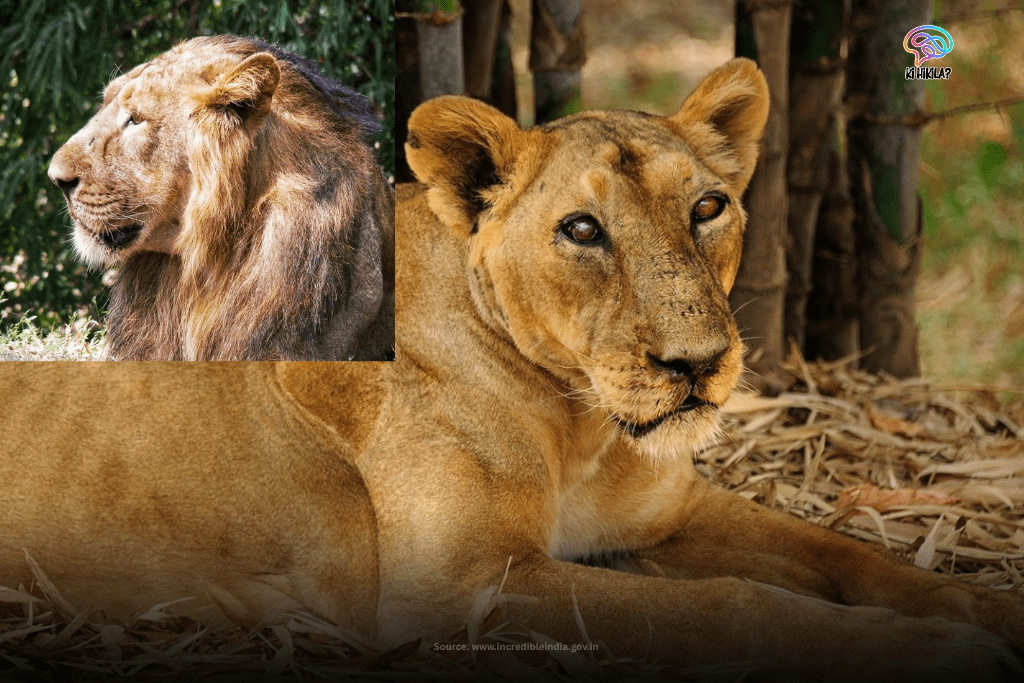
- Satmalia Deer Park (Silvassa)
- A fenced wildlife reserve featuring chital, nilgai, blackbuck, and peacocks.
- A popular eco-tourism site with observation towers.
- Vasona Lion Safari Park (near Silvassa)
- Spread over 20 hectares, this park is home to the Asiatic Lion, kept in semi-wild conditions for conservation and tourism.
- Damanganga River Bank Zones
- While not officially protected areas, these stretches support riparian flora and birdlife, contributing to local biodiversity.
Though small in scale, these areas play a crucial role in biodiversity conservation and environmental education in the region.
From forest-canopied interiors to marine-rich coastlines, this Union Territory is a biodiverse microcosm that quietly nurtures both tribal traditions and ecological significance. Its green spaces aren’t just tourist spots — they are ecological assets and lifelines for the local communities.
Economy
The economy of Dadra and Nagar Haveli and Daman and Diu reflects a unique blend of industrial development, agricultural practices, and coastal trade. Despite its small size, the Union Territory contributes meaningfully to India’s manufacturing sector, while sustaining local livelihoods through farming, fishing, and tourism.
Industrial Development of Dadra and Nagar Haveli and Daman and Diu
The region, particularly Silvassa (Dadra and Nagar Haveli) and Daman, has emerged as a prominent industrial hub over the last few decades. This growth was accelerated by tax incentives and a pro-business environment before the implementation of GST.
- The Union Territory is home to more than 7,000 small and medium-scale industries, especially in sectors like:
- Plastics
- Textiles
- Chemicals
- Electrical goods
- Packaging materials
- Many of these manufacturing units are export-oriented and supply products across India and abroad.
- Silvassa is particularly known for its plastic and pharmaceutical industries.
This industrial presence has created extensive employment opportunities for both local residents and migrant workers from neighboring states.
Agriculture and Allied Activities of Dadra and Nagar Haveli and Daman and Diu
While industrialization dominates the urban zones, agriculture remains vital for rural livelihoods, especially in Dadra and Nagar Haveli.
- Major crops include paddy, ragi, millets, sugarcane, and vegetables.
- Tribal farming methods, often eco-friendly and traditional, are still practiced in interior villages.
- Horticulture — including the cultivation of mangoes, bananas, papayas, and cashews — also contributes to income, especially in riverine areas.
Fishing is another major livelihood, particularly in Daman and Diu, where coastal communities depend on:
- Marine fishing
- Prawn farming
- Fish processing and export
Tourism and Services Sector of Dadra and Nagar Haveli and Daman and Diu
Tourism, though secondary to industry, plays an increasingly significant role in the regional economy:
- Coastal attractions in Diu and Daman draw domestic and international visitors.
- The hospitality and transport sectors have expanded steadily, creating jobs and supporting small businesses.
- Handicrafts and local food markets also benefit from tourism-driven demand.
Revenue and Contribution to GDP
Although a Union Territory, Dadra and Nagar Haveli and Daman and Diu contribute notably to India’s industrial output. The region’s per capita income is among the highest in India, largely due to its concentrated industrial base and relatively low population.
At the same time, balanced efforts are being made to promote sustainable practices, especially in tribal zones and coastal ecosystems, ensuring that economic growth does not come at the cost of environmental health or cultural erosion.
Tourism
Dadra and Nagar Haveli and Daman and Diu may not dominate travel brochures like Goa or Kerala, but for those who seek tranquility, heritage, and nature, this Union Territory offers a rich and varied experience. With a unique blend of Portuguese colonial charm, tribal traditions, serene beaches, and lush forests, tourism here is an intimate escape into India’s lesser-known beauty.
Top Tourist Destinations in Dadra and Nagar Haveli and Daman and Diu
Diu Fort and Naida Caves (Diu)
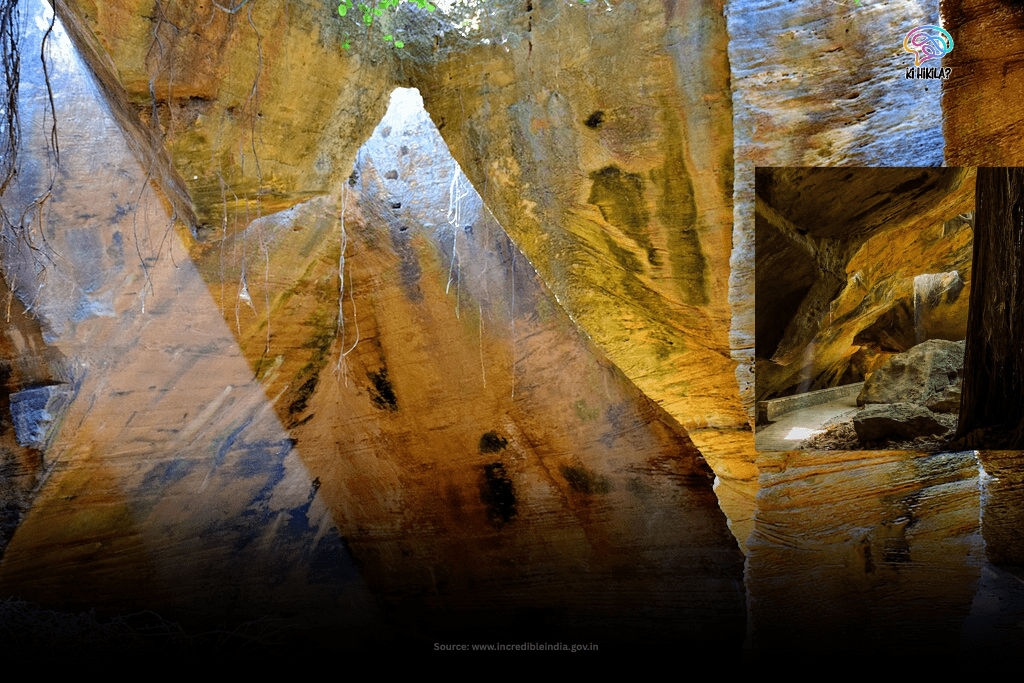
- Diu Fort, built by the Portuguese in the 16th century, stands majestically along the coast with stunning views of the Arabian Sea.
- Nearby, the Naida Caves, naturally formed and man-carved tunnels, are a surreal experience for photographers and history lovers.
Devka Beach and Jampore Beach (Daman)
- Popular weekend getaways for tourists from Gujarat and Maharashtra.
- Devka Beach is ideal for peaceful walks and carnival vibes, while Jampore Beach allows horseback riding and water sports.
Silvassa Tribal Museum
- An excellent introduction to the culture of the Warli and Dhodia tribes, showcasing traditional weapons, ornaments, musical instruments, and lifestyle artifacts.
- The museum promotes cultural preservation and awareness.
Vanganga Garden Lake (Silvassa)
- A well-maintained lake garden known for boating, jogging paths, and picnic spots. Filmmakers from Bollywood have shot scenes here due to its charming landscape.
St. Paul’s Church (Diu)
- An architectural masterpiece of baroque-style design, dating back to 1601.
- Its intricately carved wooden interiors and serene aura make it a spiritual and historical landmark.
Natural Retreats and Wildlife of Dadra and Nagar Haveli and Daman and Diu
- Satmalia Deer Park and Vasona Lion Safari near Silvassa offer eco-tourism and wildlife viewing experiences, especially for families and school excursions.
- Nature lovers can also explore coastal wetlands and Damanganga River trails for birdwatching and peaceful nature walks.
Food and Local Cuisine
- Influenced by Gujarati, Maharashtrian, tribal, and Portuguese flavors.
- Must-try dishes include:
- Prawn curry
- Fish recheado
- Dhokla and khaman
- Rice rotis with chutneys in tribal villages
- Diu, being coastal, is also known for its fresh seafood platters and subtle use of spices.
Cultural and Spiritual Sites of Dadra and Nagar Haveli and Daman and Diu
- The Bom Jesus Church (Daman) and Gangeshwar Mahadev Temple (Diu) reflect the peaceful coexistence of Christianity and Hinduism in the region.
- Numerous small tribal shrines across the territory depict animist beliefs and folk practices.
While it may not be on the mainstream travel radar, Dadra and Nagar Haveli and Daman and Diu is a quiet gem for travelers who appreciate slow travel, cultural depth, and natural serenity. Whether it’s beach walks at sunset, exploring colonial churches, or listening to tribal tales, every visit feels personal.
Education and Institutions
If you’ve ever wondered how a small Union Territory like Dadra and Nagar Haveli and Daman and Diu nurtures its people, education is one of its quiet strengths. It may not boast centuries-old universities like some states do, but what it offers is focused, grassroots-level growth in literacy and learning — especially for its tribal and coastal communities.
Literacy and Learning Progress
Over the years, the region has made significant strides in education. According to the 2011 Census, the overall literacy rate stood at around 76%, with Daman leading the way at over 87%. Since then, efforts have been ongoing to improve both access and quality — particularly in remote tribal areas where schooling wasn’t always easily available.
- Special literacy drives target first-generation learners, many of whom come from Adivasi families.
- Government initiatives like mid-day meals, free uniforms, and bicycle schemes are helping reduce dropout rates — especially among girls.
And here’s something you might not expect: Even in small villages, you’ll often find children speaking multiple languages — Hindi, Gujarati, Marathi, and sometimes even Portuguese phrases passed down from elders!
Dadra and Nagar Haveli and Daman and Diu Notable Colleges and Institutes
While the territory doesn’t yet have a large university ecosystem, it is home to some reputable institutions that serve students not just locally but also from nearby states like Gujarat and Maharashtra.
- Government Polytechnic, Daman – Known for technical education, especially in engineering and applied sciences.
- Dr. APJ Abdul Kalam Government College, Silvassa – Offers undergraduate programs in arts, commerce, and science.
- District Institute of Education and Training (DIET), DNH – Plays a key role in teacher training, curriculum development, and educational research for the region.
In Diu, education is gradually expanding through government degree colleges and vocational centers focused on skill development for the local youth, especially in tourism and fisheries.
Emphasis on Vocational Training
Given the region’s industrial base and tourism sector, there’s also a strong push towards skill-based education. Courses in hospitality, retail, computer applications, and mechanical trades are helping students transition into the workforce without having to migrate far.
If you’re someone who values inclusive education, local empowerment, and real-world readiness, you’ll find the educational ecosystem here inspiring. It may not look grand on paper, but its impact is deeply rooted in community upliftment.
Transport and Connectivity
Despite being a Union Territory made up of geographically separated regions, Dadra and Nagar Haveli and Daman and Diu are surprisingly well-connected — both within their districts and to the neighboring states of Gujarat and Maharashtra. While the territory doesn’t have its own railway station or airport in every part, ongoing infrastructure improvements are steadily narrowing that gap.
Road Connectivity of Dadra and Nagar Haveli and Daman and Diu
Road travel remains the most common and reliable mode of transportation across all regions of the territory. The road network spans approximately 2,000 kilometers, connecting remote tribal villages to town centers, ports, and industrial zones.
- National Highway 848B links Daman to Vapi (Gujarat), just 12 km away.
- Silvassa, the capital of Dadra and Nagar Haveli, is also connected to NH-48, which is part of the Delhi-Mumbai corridor.
- Regular state-run and private buses operate between towns like Diu, Una, Daman, Vapi, and Silvassa.
Because of the relatively short distances and the flat coastal terrain, motorcycles, auto-rickshaws, and shared taxis are widely used for local travel.
Rail Connectivity
There are no railway stations within the Union Territory itself, but residents and tourists depend heavily on nearby railway junctions in Gujarat and Maharashtra:
- Vapi Railway Station (Gujarat) – 12 km from Daman and well-connected to Mumbai, Surat, Ahmedabad.
- Vallabh Vidyanagar and Bhavnagar serve as nearby points for travel into Diu.
These stations make train travel a practical choice for long-distance travel, especially for budget-conscious students, families, and traders.
Air Connectivity
Only one airport operates within the UT:
- Diu Airport (IATA: DIU) – A small but functional domestic airport offering flights primarily to Mumbai and Ahmedabad.
- Nearest major airports: Surat Airport (approx. 120 km from Daman) and Mumbai’s Chhatrapati Shivaji Maharaj International Airport, both offering national and international connections.
The airport in Daman is undergoing development and is expected to start commercial services soon under the UDAN scheme, aimed at regional air connectivity.
Waterways and Ports
Given its coastal location, the UT has strategic access to water transport:
- The Port of Daman serves as a minor port facilitating fishing and small cargo operations.
- Plans have been announced to improve coastal shipping between Gujarat, Diu, and Daman under India’s Sagarmala Project.
In short, while the region may not boast the high-speed trains or metro lines of India’s metros, Dadra and Nagar Haveli and Daman and Diu are connected where it counts. Its expanding transport network ensures that both locals and visitors can travel efficiently, safely, and affordably.
Fun Facts & Trivia
Beyond its scenic beauty and layered history, Dadra and Nagar Haveli and Daman and Diu offer a treasure trove of fascinating details—many of which are not widely known outside the region. Here are some intriguing facts and pieces of trivia that set this Union Territory apart:
1. A Rare Four-Part Union Territory
This is one of India’s most geographically fragmented territories, comprising four separate areas:
- Dadra
- Nagar Haveli
- Daman
- Diu
These are not contiguous but are located across the coastal belt of western India, spread between Maharashtra and Gujarat.
2. Once Ruled by the Portuguese for Over 450 Years
Daman and Diu were under Portuguese rule from 1535 to 1961, making them part of the last European colonial presence in India. Even today, Portuguese forts, churches, and architectural styles dominate the skyline—especially in Diu and Old Daman.
3. Alcohol Is Legal Here, Unlike Gujarat
While Gujarat is a dry state, alcohol consumption is legal in Daman and Diu. This makes the region a frequent getaway spot for tourists from nearby cities like Surat and Ahmedabad.
4. No Railway Station Within the UT
Interestingly, the Union Territory does not have a single railway station within its boundaries. Residents rely on nearby stations in Gujarat, such as Vapi, for rail connectivity.
5. High Literacy Rate
According to the 2011 Census, Dadra and Nagar Haveli and Daman and Diu recorded a literacy rate of over 87%, which is higher than the national average. This reflects the government’s focus on educational development despite being a relatively small territory.
6. A Sanctuary for Giant Fruit Bats
The Fudam Bird Sanctuary in Diu is one of the few places in India where you can spot giant fruit bats hanging from old banyan trees—an unusual and memorable sight for wildlife enthusiasts.
7. UNESCO Tentative Listing
The Portuguese Fort of Diu is under consideration for inclusion in the UNESCO World Heritage tentative list due to its historic maritime architecture and colonial significance.
8. A Former Portuguese Colony That Issued Its Own Currency
During Portuguese rule, Daman and Diu had their own currency notes and coins, separate from the Indian rupee. Today, these are collector’s items and displayed in local museums.
9. Merging of Territories in 2020
The current Union Territory of Dadra and Nagar Haveli and Daman and Diu was officially formed on January 26, 2020, after the merger of two separate UTs. This move was aimed at improving administrative efficiency and governance.
These unique facets make the territory not just a destination of beaches and colonial ruins, but a living archive of diverse cultural, ecological, and political stories. Whether you’re a student, traveler, or researcher, there’s always something surprising waiting to be discovered.
Conclusion
Dadra and Nagar Haveli and Daman and Diu stand as a compelling chapter in the narrative of India—where coastal charm meets colonial legacy, tribal heritage blends with urban ambition, and nature coexists with cultural resilience. Though small in size, this Union Territory offers a rich spectrum of experiences: serene beaches, historic forts, tribal customs, vibrant festivals, and a multilingual, multicultural society.
What makes this region particularly fascinating is its layered identity—once a Portuguese stronghold, later a liberated part of independent India, and now a modern, administratively unified territory that continues to evolve. Its landscapes whisper stories of centuries past, while its present reflects a quiet yet confident progress.
Whether you are a student seeking historical depth, a traveler drawn to offbeat destinations, or a curious mind eager to understand India’s diversity, Dadra and Nagar Haveli and Daman and Diu offer perspectives that go far beyond the guidebooks.
Explore it. Understand it. Let it shift your perspective of what India truly encompasses.
This is Dadra and Nagar Haveli and Daman and Diu—fragmented on the map, but unified in spirit.
Top 10 Questions About Dadra and Nagar Haveli and Daman and Diu – Culture, Travel, History & More
What is Dadra and Nagar Haveli and Daman and Diu known for?
Answer: This Union Territory is known for its Portuguese colonial heritage, peaceful beaches, tribal culture, and relaxed coastal life. Tourists often visit for its historical forts, clean seashores, and cultural fusion of Gujarati, Maharashtrian, and tribal traditions.
When was Dadra and Nagar Haveli and Daman and Diu formed as a Union Territory?
Answer: It was officially formed on 26 January 2020, after the merger of two former Union Territories: Dadra and Nagar Haveli, and Daman and Diu. This move streamlined governance and administration.
Is Daman a good place to visit for beach tourism?
Answer: Yes, Daman is a popular beach destination, especially for its clean sands, palm-lined shores, and historic sea forts. Devka Beach and Jampore Beach are among the top attractions for travelers seeking a serene getaway.
What languages are commonly spoken in this Union Territory?
Answer: The most commonly spoken languages include Gujarati, Hindi, Marathi, and English. Due to its diverse population, multilingual communication is common across the territory.
What is the capital of Dadra and Nagar Haveli and Daman and Diu?
Answer: The official capital of the Union Territory is Daman, which functions as the administrative headquarters. It houses the key government offices and administrative institutions.
What is the history behind Portuguese influence in the region?
Answer: The regions of Daman and Diu were ruled by the Portuguese from the 16th century until 1961, when they were integrated into India following military action. Their legacy is still visible in the form of churches, forts, and architecture.
Is Dadra and Nagar Haveli a tribal region?
Answer: Yes, Dadra and Nagar Haveli is home to several indigenous tribal communities, particularly the Warli, Dhodia, and Kokna tribes. These communities contribute significantly to the local culture through unique art, crafts, and customs.
How is the climate in Dadra and Nagar Haveli and Daman and Diu?
Answer: The region has a tropical climate, with hot summers, a heavy monsoon season (June–September), and mild winters. The coastal areas like Diu and Daman stay relatively humid throughout the year.
What are the main industries supporting the local economy?
Answer: The territory’s economy thrives on tourism, fishing, small-scale industries, and manufacturing. The presence of tax benefits has attracted industrial units, especially in Dadra and Nagar Haveli.
Are there any festivals unique to this Union Territory?
Answer: Yes, along with popular Indian festivals like Diwali and Holi, the region celebrates Nariyal Poornima, Christmas, and tribal harvest festivals. The blend of tribal, Hindu, and Christian traditions makes its cultural calendar quite diverse.


